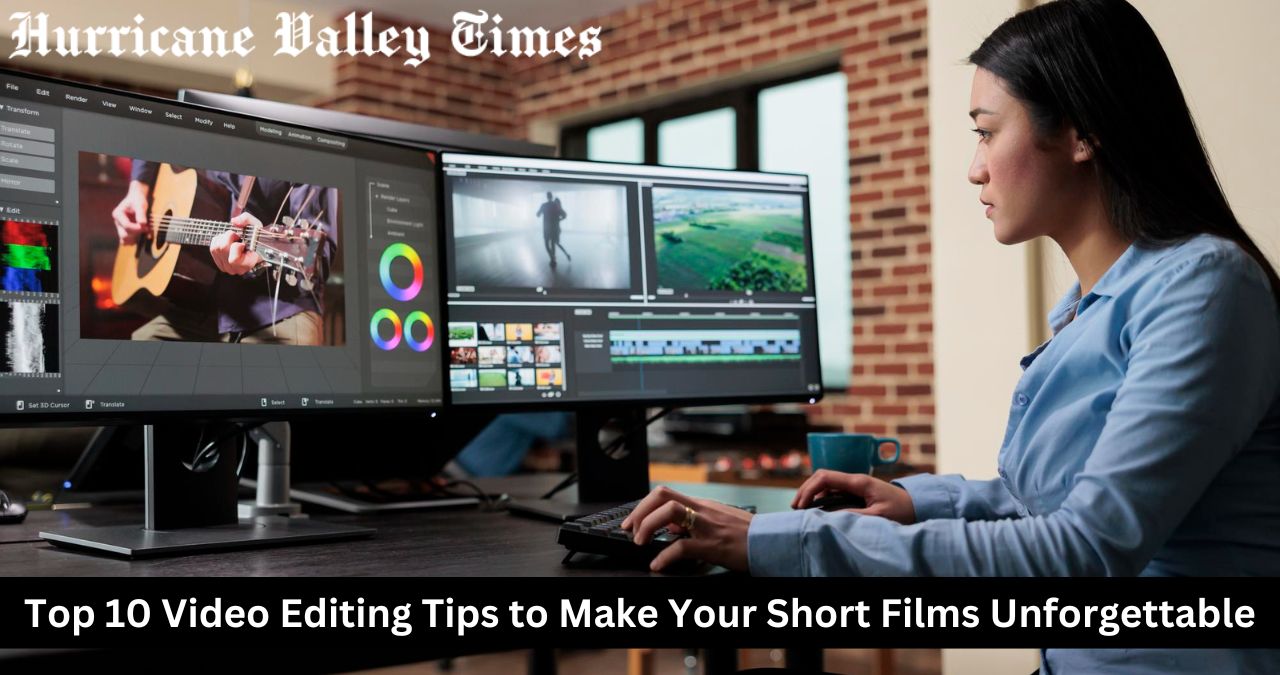Creating engaging short films requires more than just a good script and talented actors; it also demands skilled video editing. The editing process can transform raw footage into a captivating story, holding the audience’s attention from start to finish. Here are the top 10 video editing tips to help you craft compelling short films that stand out.
1. Plan Your Edit Before Shooting
Planning is an essential part of the filmmaking journey. Before you even start shooting, have a clear vision of how you want your final product to look. This includes deciding on the pacing, the transitions you’ll use, and any special effects you might want to incorporate. By having a solid plan, you’ll save time during the editing process and ensure that your story flows seamlessly.
2. Organize Your Footage
Once you’ve captured your footage, the next step is to organize it. Label your clips, create folders for different scenes, and make notes about the content of each clip. This organization will make it easier to find the footage you need when you start editing and prevent you from feeling overwhelmed by a chaotic media library.
3. Use the Right Tools
Having the right tools can make a significant difference in the quality of your short film. A powerful video editor can streamline your workflow and provide you with the features you need to create professional-looking videos. With a free online video editor, you can easily drag and drop videos from your device and use its feature-rich capabilities to create engaging videos for social media.
4. Focus on Storytelling
At the heart of any great film is a compelling story. As you edit, always keep the story in mind. Cut out any unnecessary footage that doesn’t contribute to the narrative. Use your editing skills to enhance the storytelling, whether through pacing, transitions, or the strategic use of music and sound effects.
5. Pay Attention to Pacing
Pacing is a critical element in filmmaking. The rhythm of your edits can greatly influence how your audience experiences the story. Experiment with different speeds and see how they affect the mood and tension of your scenes. Remember, a well-paced film keeps the audience engaged and maintains their interest throughout.
6. Master the Art of Cutting
Knowing where and when to cut is essential for creating a smooth and engaging film. Avoid cutting too frequently, as this can make your film feel choppy and disjointed. Instead, focus on making cuts that feel natural and enhance the flow of the story. Practice makes perfect, so don’t be afraid to experiment and find what works best for your film.
7. Use Transitions Wisely
Transitions can add a lot of polish to your film, but they should be used sparingly. Overusing transitions can distract from the story and make your film look amateurish. Stick to simple transitions like cuts and fades for most of your edits, and save more elaborate effects for moments when you really want to make an impact.
8. Enhance Your Sound Design
Sound is just as crucial as visuals in filmmaking. Devote time to crafting a rich soundscape for your film, encompassing dialogue, sound effects, and background music. Use sound to set the mood, build tension, and enhance the emotional impact of your scenes. Don’t forget to pay attention to audio levels and ensure that dialogue is clear and easily understood.
9. Color Correct and Grade Your Footage
Color correction and grading can significantly improve the look of your film. Color correction ensures that all your shots have a consistent look and feel, while color grading can add a specific mood or tone to your scenes. Use these tools to make your footage more visually appealing and to enhance the overall atmosphere of your film.
10. Seek Feedback and Make Revisions
Finally, don’t underestimate the value of feedback. Show your edited film to a few trusted individuals and ask for their honest opinions. Pay attention to their feedback and be willing to make revisions. Editing is an iterative process, and each round of feedback can help you refine your film and make it the best it can be.
Using an AI-Powered Video Editor
Incorporating advanced technology can streamline your editing process. An AI-powered video editor can assist you in organizing footage, suggesting cuts, and even applying effects. These tools are designed to make the editing process more efficient, allowing you to focus more on creativity and less on technical details.
Conclusion
Creating an engaging short film is a multifaceted process that involves careful planning, skilled editing, and a keen eye for detail. By following these top 10 video editing tips, you can enhance your storytelling, improve the visual and audio quality of your film, and keep your audience captivated from beginning to end. Whether you’re a seasoned filmmaker or just starting out, these tips will help you elevate your short films and make a lasting impression. Remember, the key to great video editing is practice and experimentation. Don’t be afraid to try new techniques and push the boundaries of your creativity. With the right tools and a dedication to honing your craft, you can create short films that are not only engaging but also memorable.















Got a Questions?
Find us on Socials or Contact us and we’ll get back to you as soon as possible.